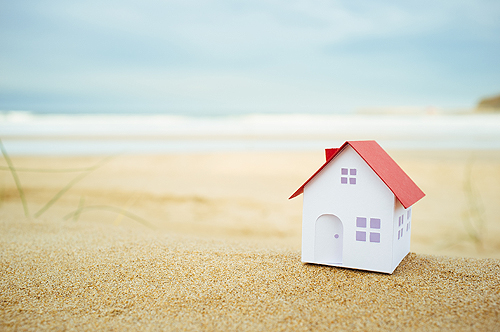Tips for Building a New Home on Sand
Constructing a home on sandy soil requires strict adherence to specific construction best practices, especially in the coastal regions, southern Texas and the Gulf Coast area. Here are some tips to help you build a stable foundation on sand.
Know the sand. When most people think about sand, they picture deserts or beaches. In reality, there are a wide variety of sands, and each type has different properties. Some sand can act much like gravel, while other varieties can act more like silt. Before starting any construction, make sure you know what type of sand you are dealing with so you can plan accordingly.
Acquire a soil report. A professional soil test will help you develop an effective solution for your foundation. This essential document will include vital information that will help you side-step potentially catastrophic problems. Paying for a soil test upfront will save you from having to pay later, once a foundation has settled. A soil report will also help you calculate the sand’s bearing capacity, along with the composition and depth of other soils beneath the sand.
Double-check your math. Sandy soil will usually be able to bear between 1,500 and 3,000 pounds per every square foot. Be sure to carefully calculate the weight of your new home to determine the required load capacity. In addition to calculating the weight of the walls and floors, factor in any regional incidental codes that may increase the overall weight. Even the slightest miscalculation can have significant consequences, so be sure to check and then double-check your calculations and leave plenty of room for additions and oversights.
Dig deeper. You can leverage the detailed information in your professional soil report to help you engineer an appropriate deep foundation solution. Beneath the sand, you will find more cohesive soil that’s harder and less shifty. Take steps to harness the stable properties of this lower soil to successfully anchor your foundation.
Other Considerations
Even if you have a perfect plan for building on sandy soil, you may still need to take a few extra steps, especially if you are building in coastal regions of the United States. When building on sand, you will want to reduce or completely eliminate vibration, since this can cause sand to settle. If you are building in a coastal area, odds are you will also need to make sure you build higher than the listed 100-year flood crest. This follows FEMA’s regulations while also keeping the home dry in case of a hurricane or other natural disaster.
You should also consider protecting your business by acquiring a 10-year structural warranty to protect against potential repair costs that might occur after your builders warranty expires. By expanding warranty coverage for a new home, a structural warranty protects buyers from unmanageable costs. This extra warranty protection also helps to enhance a homeowner’s confidence in the reliability and quality of a builder’s work, making it a major selling point, especially for risk-averse buyers in the coastal regions, southern Texas and the Gulf Coast area.
Learn how you can protect your business and add valuable selling points to your new builds with 2-10 Structural Warranties.








